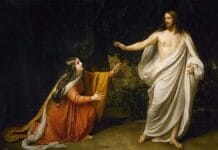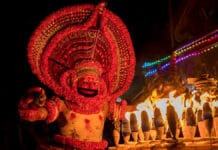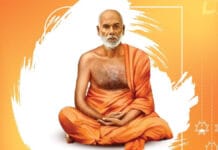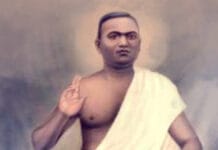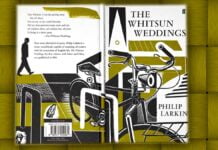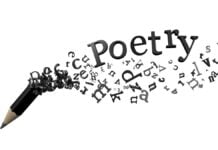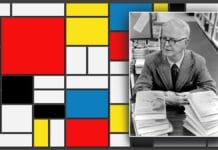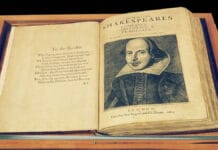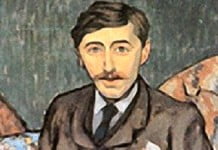Monologue refers to a speech or a verbal presentation that a character gives to exhibit his ideas and thoughts in a loud manner. Through monologue, the character shares his thoughts with the audience or, sometimes, with another character. Moreover, it is a kind of literary device and is quite common in plays, films, and sometimes poetry, a non-dramatic medium.
The word Monologue comes from the Greek word monos, which means alone, and logos refers to speech. However, there are two types of monologue- interior and dramatic monologue. In an interior monologue, the character usually conveys his thoughts so the audience can get the experience. Moreover, it is remarkably noticeable in plays, novels and films. This kind of monologue is also signified as the stream of consciousness. On the other hand, a dramatic monologue is a kind of monologue where a character addresses the silent listener. It comprises theatrical qualities, and it is also seen in the poetry.
The Dramatic Monologue is the most important kind of that sub-division of objective poetry, which we have called dramatic, which is dramatic not because it is to be acted on the stage but because it gives the thoughts and emotions, not of the poet but some imagined character. In Dramatic Monologue, the speaker other than the poet speaks to an imaginary audience at a decisive moment in his life. It differs from a soliloquy in that a soliloquy is not intended to be heard by others. Robert Browning is the most influential writer of dramatic monologues in English.
The dramatic monologues may be used to study characters of particular mental states and moral crises in the characters’ souls. In his monologues, the poet Browning depicts a vast variety of characters, taken from all walks of life: cowards, rogues, artists, scholars, Dukes, cheats, beggars, murderers, and saints like Pippa, all crowd his picture gallery. His characters belong not to any one country but several countries and ages.
In each monologue, one character is at the centre, and the substance of the monologue consists of what passes within his soul. Cazamian calls them soul reflectors or studies in practical psychology, for they provide us with a peep into the inner workings of the mind and soul of these characters. Besides these prominent figures, in each monologue, some minor figures are briefly but distinctly sketched with a few deft touches. They are the listeners for most of the time, but they also perform the dramatic function of the interlocutor from time to time and thus provide the reason or the cause for the speaker’s mood or self-analysis. Thus, in Andrea Del Sarto, Andrea is the speaker, Lucrezia is the listener, and her lover and the three rival artists are also introduced indirectly. Often, the natural background is skilfully interwoven with the speaker’s mood and temper; in this way, the total effect is heightened. In the poem, the speaker’s references to the Autumnal grey nature background are used to heighten his mood of depression and world-weariness.
In each monologue, the speaker is placed in the most meaningful or critical situation of his life, and the monologue embodies his reactions to his situation. The monologues have an abrupt but very arresting opening, and, at the same time, what has gone before is suggested cleverly or brought out through retrospective meditation and reflection. Thus, My Last Duchess opens with a reference to the picture of the dead Duchess, clearly indicating that it is being shown to someone. Similarly, this abrupt beginning may be followed by self-introspection on the speaker’s part, and his moods, emotions, reflections, and meditations may be fully expressed. The speaker’s thoughts range freely over the past and the future, so there is no logical and chronological development. The past and the future are focused on the present, and the unity is emotional rather than logical.
Features of the Dramatic Monologue
- The most noticeable feature of a dramatic monologue is the use of ‘I’. Here, ‘I’ stands as a persona.
- The use of expressions and verbs that refer to the listener, who is not directly appearing in the piece of literature.
- The tone of a dramatic monologue is casual, and the application of colloquial language is expected in this kind of writing.
- The typical language of drama is the essence of a dramatic monologue, where ‘you see’ and ‘well’ are commonly used.
- The discovery of a personality is a prominent part of the dramatic monologue during a critical point in life.
- In the dramatic monologue, going beyond the limits of one’s self or experience is natural. An interest in human psychology is usually observed in dramatic monologues; hence, this literary device is well-linked with the historical characters. Moreover, it acts as a poet’s instrument to scrutinise the human being’s heart.
There are three major types of dramatic monologues -Romantic monologue, Philosophical and Psychological monologue and Conversational monologue.
Dramatic Monologue Examples
Example #1
My Last Duchess by Robert Browning

“That’s my last Duchess painted on the wall,
Looking as if she were alive. I call
That piece a wonder, now; Fra Pandolf’s hands
Worked busily a day, and there she stands.
Will’t please you sit and look at her? I said
“Fra Pandolf” by design, for never read
Strangers like you that pictured countenance,
The depth and passion of its earnest glance,
But to myself they turned (since none puts by
The curtain I have drawn for you, but I)
And seemed as they would ask me, if they durst,
How such a glance came there; so, not the first
Are you to turn and ask thus.”
This extract is from the famous monologue of a duke. He tells his audience, possibly his new bride’s father, about his last Duchess, who could not survive his severity. It is a type of psychological monologue that describes the psychological state of mind of the speaker. Browning has exposed the duke’s cruel state of mind through this poem, My Last Duchess.
Example #2
The Love Song of J. Alfred Prufrock by T.S.Eliot

“Let us go then, you and I,
When the evening is spread out against the sky
Like a patient etherized upon a table;
Let us go, through certain half-deserted streets,
The muttering retreats
Of restless nights in one-night cheap hotels
And sawdust restaurants with oyster-shells:
Streets that follow like a tedious argument
Of insidious intent
To lead you to an overwhelming question …
Oh, do not ask, “What is it?”
Let us go and make our visit.”
This extract is from the poem The Love Song of J Alfred Prufrock by T S Eliot, a famous and popular modern poet. He has highlighted the thoughts of a modern young man who is madly in love but hesitates to express it. Therefore, he faces an existential dilemma. The poem highlights his psychological state of mind through this contemporary monologue. This extract highlights this dilemma of hesitation in the very first line and then repeats it in the last line.
Example #3
Lady Lazarus by Sylvia Plath

I have done it again.
One year in every ten
I manage it—
A sort of walking miracle, my skin
Bright as a Nazi lampshade,
My right foot
A paperweight,
My face a featureless, fine
Jew linen.
This extract is from the famous monologue of Sylvia Plath’s Lady Lazarus. It also highlights her psychological state of mind about her act of committing suicide and subsequent failure. She has likened this act to the Holocaust to create her powerful monologue.
Example #4
Dover Beach By Matthew Arnold

“The sea is calm tonight.
The tide is full, the moon lies fair
Upon the straits; on the French coast the light
Gleams and is gone; the cliffs of England stand,
Glimmering and vast, out in the tranquil bay.
Come to the window, sweet is the night-air!”
Dover Beach is another example of such an autobiographical monologue by Matthew Arnold. He has highlighted his situation and his reaction to the sorrow that he is experiencing. This monologue expressed his thoughts about his bride on honeymoon in the same breach. He recalls the past and writes about the sea again.
Example #5
Hawk’s Monologue by Ted Hughes
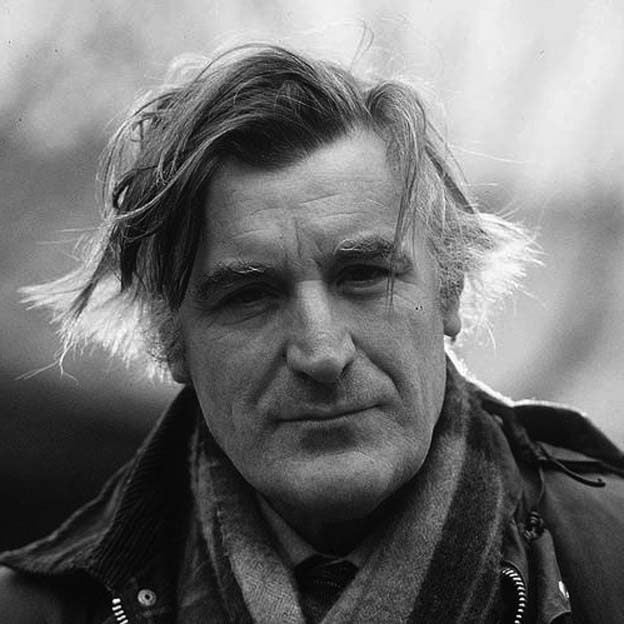
“I sit in the top of the wood, my eyes closed.
Inaction, no falsifying dream
Between my hooked head and hooked feet:
Or in sleep rehearse perfect kills and eat.
The convenience of the high trees!
The air’s buoyancy and the sun’s ray
Are of advantage to me;
And the earth’s face upward for my inspection.”
These are the first two stanzas of the famous monologue of Ted Hughes. This poem presents a hawk perching high on a tree, thinking about his power and dreams. It presents the psychological state of mind of a personified megalomaniac bird and how he thinks when he holds power over the lives of other weak birds. This dramatic monologue exemplifies how influential people think when they have control over others.
A monologue functions as a tool to give vent to one’s thoughts. It allows the poets to use powerful words spoken through their characters. So, the characters can express themselves or their ideas without an obstacle or hindrance. A dramatic monologue is also a convenient device to present different characters and their inner thoughts through verses.

